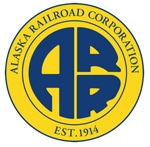 It’s not all we wanted, but, maybe more important, it’s not as bad as it could have been.
It’s not all we wanted, but, maybe more important, it’s not as bad as it could have been.
Given the polarization of this Congress, the Moving Ahead for Progress in the 21st Century – MAP-21 – is as good a new transportation authorization bill as we could have hoped for. Passed by bipartisan majorities in the House and Senate June 29, President Obama is expected to sign the bill into law.
This is what MAP-21 does as it applies to bus, commuter rail, intercity passenger rail and freight rail:
* It increases federal expenditures for federal transit programs – bus and commuter rail – beginning in October and continuing through September 2014. Within those numbers, however, is a reduction in bus and bus facilities spending, which is a victory of sorts since an earlier version sought to zero out such spending.
* It allows transit systems operating fewer than 100 buses in peak service to use a portion of their capital grants for operating expenses. This will allow money for smaller, cash-strapped systems to keep buses on the road and return furloughed drivers to work. But, sadly, larger bus system do not gain such flexibility — even during periods of high unemployment.
* It extends a $17 billion federal loan program for transit and freight rail operators, making, for example, up to $350 million available to the Los Angeles Metropolitan Transportation Authority (LACMTA) for transit improvements.
* It grants authority to the Department of Transportation to create a national safety plan for all modes of public transportation, which will result in minimum standard safety performance standards for systems not currently regulated by the federal government. These safety performance standards will include establishment of a national safety certification training program for employees of federal- and state-owned transit system.
* It requires the Federal Motor Carrier Safety Administration to establish a national registry of medical examiners within one year, and requires employers periodically to verify the commercial driver license status of employees.
* It provides 80 percent in federal match dollars for transit systems to develop and carry out state safety oversight programs. State oversight will include review, approval and enforcement of transit agency safety plans, including audits by the Federal Transit Administration.
* It scraps at attempt to eliminate overtime and minimum wage provisions for van drivers whose routes cross state lines.
* It strengthens Buy America requirements for all new bus and passenger-rail rolling stock and other capital expenditures, which means more American jobs.
* It leaves in place a requirement that positive train control be implemented on all track carrying passenger rail — commuter and Amtrak — by Dec. 31, 2015. It does, however, reduce the PTC installation requirement for freight railroads, providing that PTC to be installed on fewer than 40 percent of main line trackage by Dec. 31, 2015, with 60 percent (freight only trackage) continuing to use existing train control systems.
* Importantly, it does not include a provision sought by conservatives that would have blocked federal funds for operation of Amtrak’s long-distance trains in 27 states, nor does it include a provision that would have had the same effect by denying federal funds for subsidizing food and beverage service on long-distance trains.
* Also, on the positive side for Amtrak, it provides a new federal grant program to improve or preserve Amtrak routes exceeding 750 miles, and it makes Amtrak eligible for other federal grants on corridor routes and funds intended to help ease highway congestion. Other Amtrak operating and capital grants are provided in separate legislation.
* A provision that originated in the Senate to eliminate almost 75 percent of Alaska Railroad federal funding and the $6 million in congestion and air quality mitigation funding for Amtrak’s Downeaster train in New England was amended. The Alaska Railroad funding now will be cut by 13 percent in each of the next two years by applying a new funding formula, and the air quality mitigation funding will continue for the Downeaster.
* It does not increase weight and length limits for trucks on federal aid highways – which would adversely impact rail traffic and rail jobs – but does allow an extension for current higher weights on some highway corridors while another study on the impact of liberalizing truck weight and length limits is conducted.
“Even though it has shortcomings from what we would have preferred, our members are better off with the compromise. Had there been no bill, we may have faced the undermining of public transportation by conservatives who want to push public transportation’s expense to the fare box and those who can least afford it,” said UTU National Legislative Director James Stem.
The Federal Transit Administration has created a website to provide more information on MAP-21. Click below to view the website:
http://www.fta.dot.gov/map21/
 As part of a reorganization, the Alaska Railroad Corp. (ARRC) recently realigned its top-level management team, including the appointment of William O’Leary as chief operating officer and Barbara Amy as chief financial officer.
As part of a reorganization, the Alaska Railroad Corp. (ARRC) recently realigned its top-level management team, including the appointment of William O’Leary as chief operating officer and Barbara Amy as chief financial officer.
 It’s not all we wanted, but, maybe more important, it’s not as bad as it could have been.
It’s not all we wanted, but, maybe more important, it’s not as bad as it could have been.